A First Step for Designing Realistic Mechanism on Handling Waste for the Municipalities
Waste Management Model
May 24, 2022
UNDP Accelerator Lab in Nepal has been exploring ways to find various options to deal with the complexity of solid waste in Nepal since September 2020. Within the last 1.5 years, we were able to conduct research and studies on the situation of plastic waste at 293 urban municipalities, explore and test locally driven experiments and build prototypes on plastic bricks in Pokhara Metropolitan City, Refused Derived Fuel in Thimi Municipality and plastic shredding machines in Kathmandu Metropolitan City.
Similarly, UNDP under its post-COVID recovery efforts, initiated Promoting Green Recovery Project (PGRP), with the aim of strengthening the capacities of the 7 national health care facilities, and is working with 5 local municipalities (Bheemdatt, Birendranagar, Tilottama, Waling and Duhabi) for the effective management of municipal waste while fostering opportunities to create 1,500 green jobs and raise the awareness on sustainable urban mobility.
UNDP Accelerator Lab together with Promoting Green Recovery Project have conducted two rapid assessments at Namobuddha Municipality and Tilottama Municipality to understand current situations, the local gaps and needs to minimize the key issues and maximize waste recovery at the local level.
This blog is the first in the two-part series. The first blog reflects on the current waste management practices, gaps and the lessons learnt on what worked and what did not for the two municipalities while the second blog will describe the proposed waste management models for Namobuddha and Tilottama municipalities.
Key Issues Observed
The interventions through our projects have been crucial for us to understand the complexity of solid waste management. The key issues that we observed at both municipalities ranged from basic household level segregations to internalizing behaviors towards waste management to larger impediments on advocacy, specific policies and guidelines for different waste categories that link the community with local governments and the national umbrella holding the overall responsibilities.
Current Waste Management Practices
The initial findings from the rapid assessments revealed that the household waste segregation practices are negligible at both the municipalities, Namobuddha and Tilottama. However, we detected different approaches on raising awareness for proper segregation at the local level.
In the case of Namobuddha Municipality, it was observed that there are pig farms that have distributed buckets to collect biodegradable waste while recycled waste (such as PET bottles, glass, metal and cardboards) are being collected by waste collectors from Banepa Municipality and Dhulikhel Municipality twice a week. Namobuddha Municipality Office is solely responsible for collecting the remaining waste from 250 members, particularly commercial sectors, residing in the core market of Dapcha Bazaar and Bhakhunde Bazaar area. The collected waste is directly dumped in the open pit and covered with sand and soil which is located next to their office building.
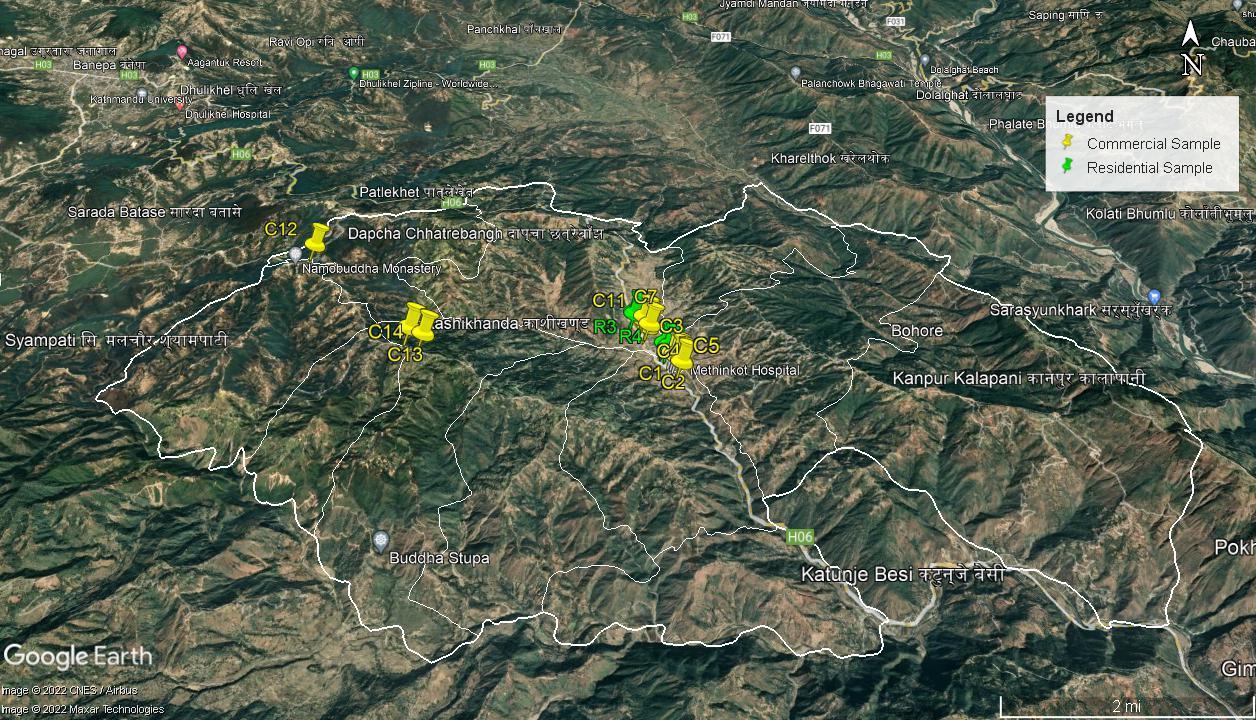
Sampling areas of Dapcha Bazaar and Bhakhunde Bazaar of Namobuddha Municipality
In the case of Tilottama Municipality, we observed that three organizations, viz. WASH Sahakari (wards 7-17), Sundar Nepal (ward 1 and wards 3-6) and Tole Lane Organization of Ward 2, were more responsible on managing waste. Among these organizations, WASH Sahakari sorted out the collected waste at their facility center by using conveyor belt. The recycled products are then sold to recycling companies while the remaining waste is dumped at three different locations allocated for each organization.
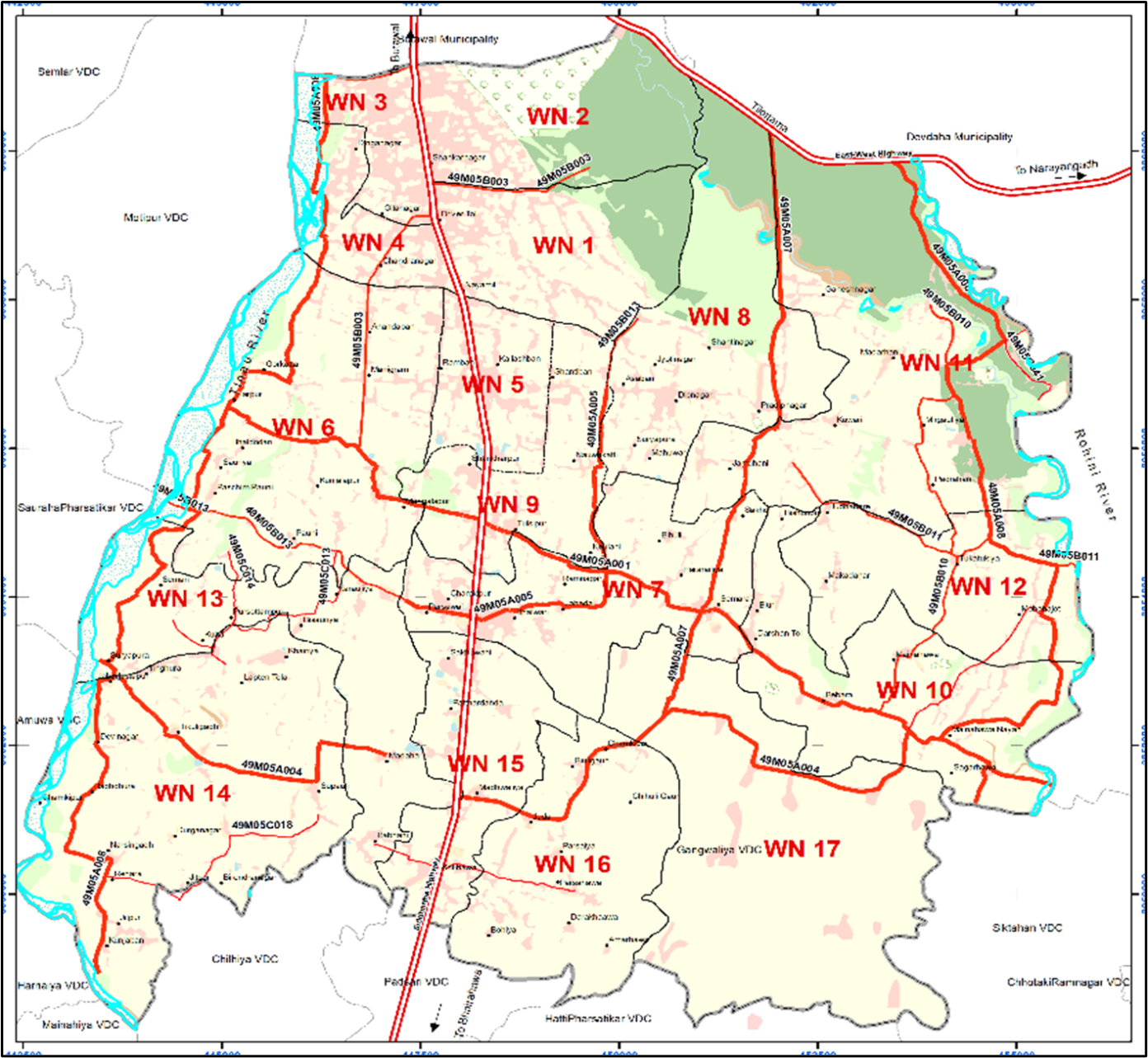
Sampling wards of Tilottama Municipality
The waste composition in both the municipalities was calculated through quadratic method based on the collected waste at disposal sites. As reflected in the graphs below, the major sources of waste at both the municipalities are biodegradable ones followed by plastics and paper/ cardboard.
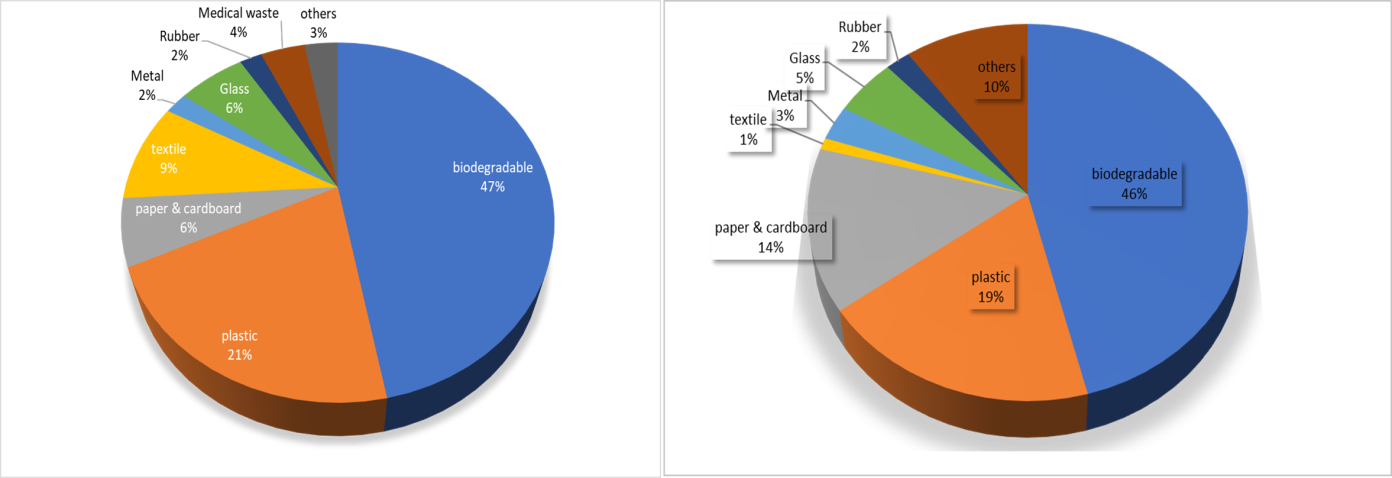
Average waste composition of Tilottama Municipality (left) and Namobuddha Municipality (right) [Source: UNDP, 2022]
Gap Analysis
The observed patterns on waste generation, collection, segregation, recycling, and disposal at both the municipalities have shown their own sets of gaps with few common patterns that needs to be addressed at the local level. As presented in the gap analysis diagram below, the common patterns that raised our attention were open dumping and open burning of plastics and electronic wastes at both the municipalities. Besides, lack of resources, awareness, waste treatment measures and waste management models at both the municipalities were the topmost common gaps hindering the overall Solid Waste Management processes.
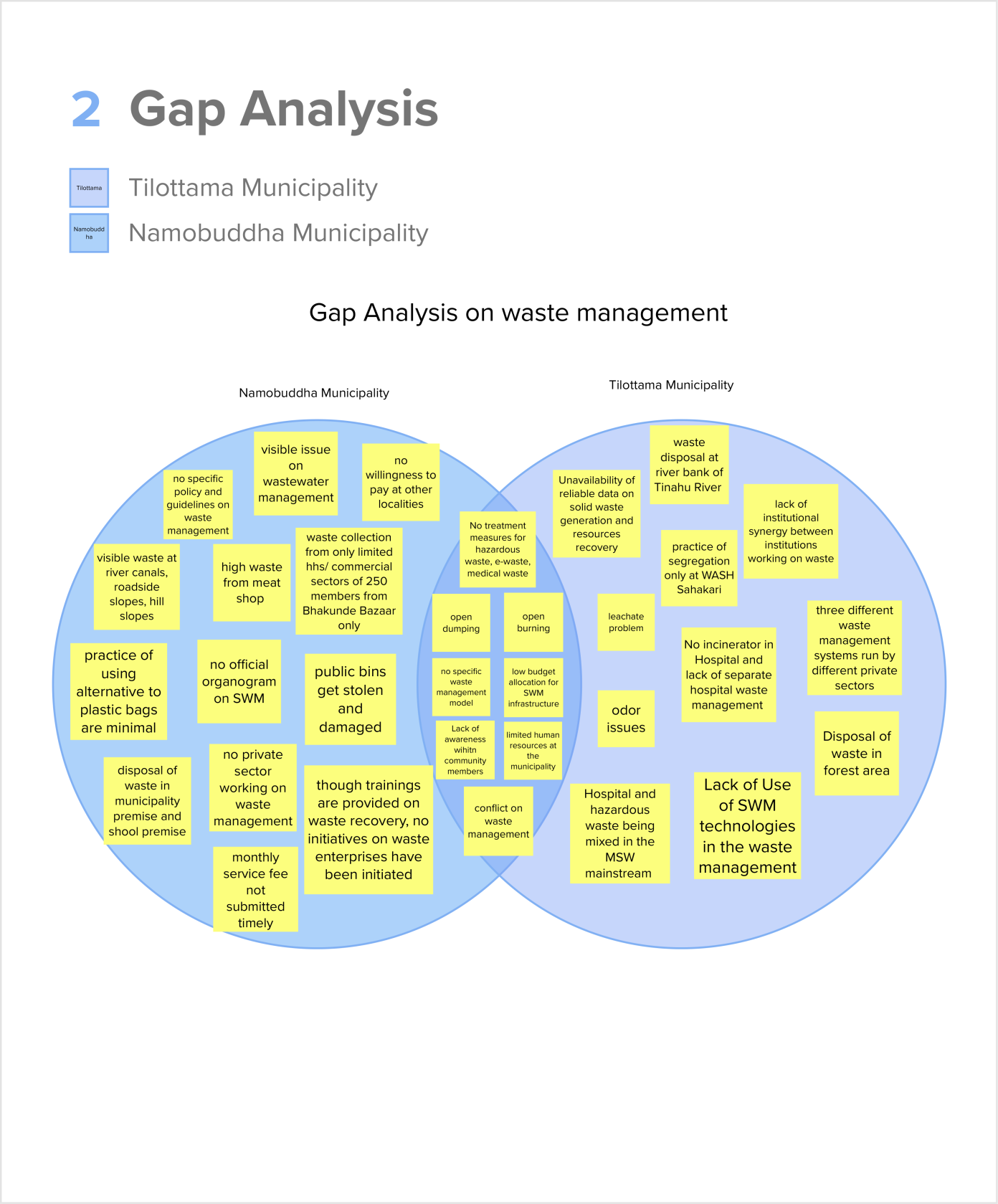
Gap analysis on Solid Waste Management conducted for Namobuddha Municipality and Tilottama Municipality
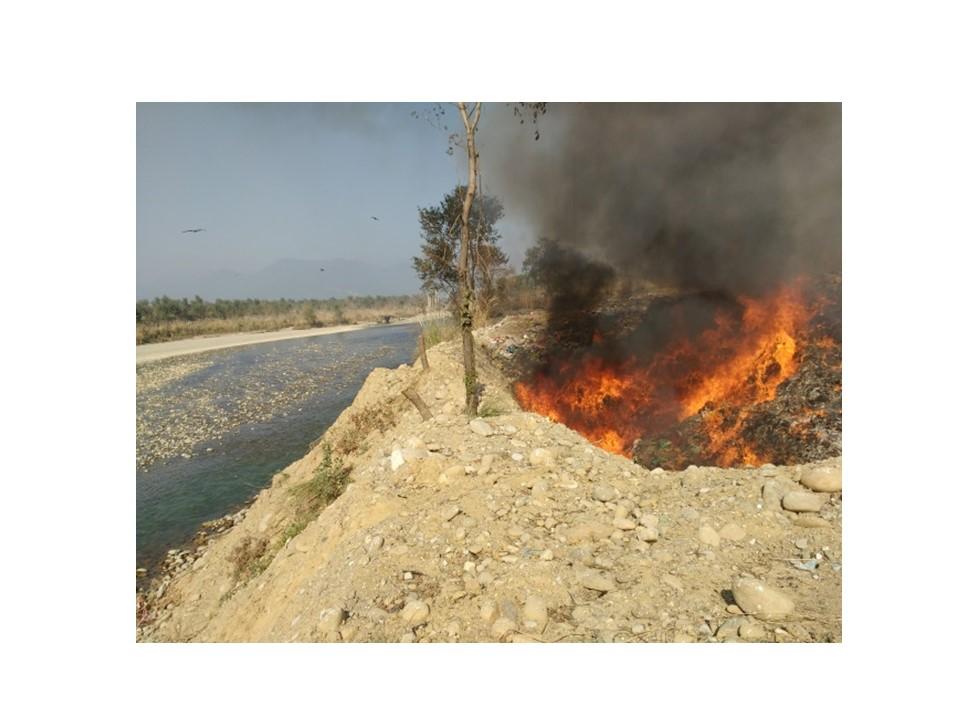
Issue of open burning of waste at Tinau Riverbank, Tilottama Municipality.
We also observed that practices of using alternatives to plastics and household level segregation are very negligible and have only been initiated by WASH Sahakari, a local cooperative in Tilottama Municipality for 11 wards (ward 7-ward 17) but, unfortunately, has not been successful in delivering the desired results. WASH Sahakari, however, has installed conveyor belt to sort the collected waste.
Expected Actions
The assessments are expected to bring forth the actual scenario for both the municipalities through field supervision, consultative processes and brainstorming sessions. One of the expected outputs of these sessions is to collectively design feasible waste management models for both municipalities as per their need and requirements.
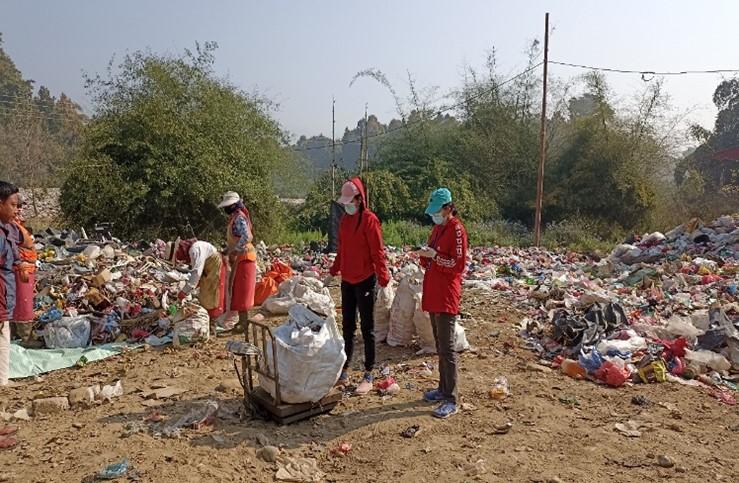
Waste composition survey at one of the dumping sites of Tilottama Municipality
However, to ensure that the existing good practices of waste segregation and processing is further improved and continued at both the municipalities, detail implementation plan with localized waste management model will play crucial roles.
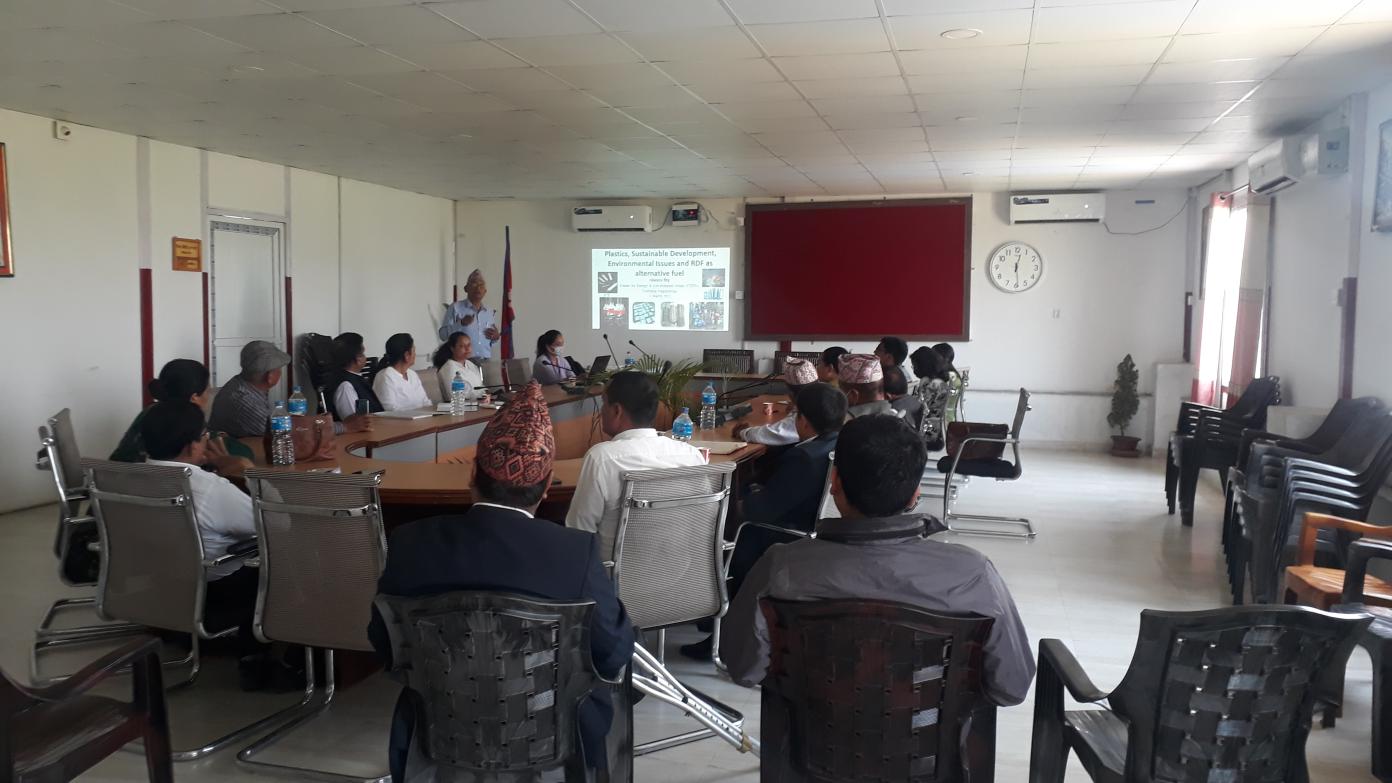
Stakeholders involved in one of the round table discussions at Tilottama Municipality
Lessons Learnt
While analyzing the gaps and initiating the rapid assessments, we were able to observe three interesting insights. One was related to institutional capacity and interest of the local governments on introducing new initiatives and taking risks; second was related to the knowledge and skillsets; and the third was related to the interest on exploring waste recovery options and sustaining them in a long run. The gap analysis has made it even clearer that a specific waste management model is essential for both the municipalities that will look forward and will provide a need-based and locally adaptable approach based on the waste composition, local capacity (in terms of both resources and skillsets) and level of awareness.
During this analytical process, we were able to make few observations that could stimulate and guide the preparation of the probable waste management models for both the municipalities:
- While interacting with the local community, we observed a high willingness to segregate waste at source. However, practice is minimal due to the lack of proper training and awareness and lack of motivation to the waste management champions such as the local waste enterprises.
- There is a possibility of introducing proper mechanisms with essential facilities to recycle and sort waste at specific locations, which could be the concept of waste bank or waste recovery center or waste facility center as per the local requirement and need.
- There is a high level of interest among the women’s groups, social organizations, Tole Lane Organizations, youth clubs who could be mobilized to ensure community participation in the waste management sector.
- There is a high potential of Public Private Partnership since there exist few enterprises interested in investing to start recovery business if there is additional support from the local government, in the form of subsidy or incentives or cost-sharing partnership.
- Local plan and policy on municipal waste management will also guide the municipality to identify gaps and propose viable options on waste recovery. However, there is a requirement on strict enforcement to incorporate them in the local level periodic and annual planning to ensure proper implementation and sustainability.
- Each ward in both the municipalities has a good understanding of the urgent need of waste management but has not started off anything yet due to the lack of proper guidance. A local level guiding document could be one of the entry points for both the municipalities.

 Locations
Locations
